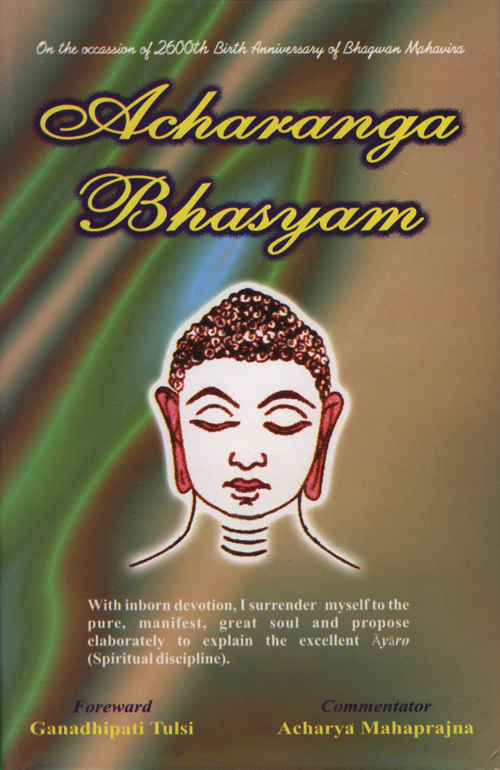The designation of the present chapter is 'The Essence of the World'. This is a secondary designation. This chapter is named 'Āvantῑ’ [1]which is the word with which it begins. It has six sections that deal with the six topics:[2]
- One indulging in violence, or engaged in injurious activity, or roaming about alone is not an ascetic.
- Such person alone is an ascetic who is an abstainer. The non-abstainer is the owner of possessions.
- The abstainer is a person free of possessiveness and disgusted with worldly pleasures.
- The statement of the impediments that arise for the inapt person who is unfamiliar with the scripture and its meaning.
- An ascetic should be like a lake. Even as the lake full of water is an auspicious object, an ascetic fully endowed with knowledge, faith and conduct is an admirable person. He alone is the practiser of penance, self-restraint, self-guarding and detachment.
- The wrong path should be avoided and attachment and hatred should be abandoned.
The meaning of the word 'essence' in the caption 'Essence of the World' is to be understood in reference to the topics of the sections. The question is: what is the essence in this worthless world? There can be many an answer to this question. The common man's answers are:
In this worthless world, what is full of worth is the woman with eyes resembling those of an antelope.
In this worthless world, what is full of worth is accumulation of wealth.
In this worthless world, what is full of worth is the sweetmeat.
Whatever is coveted by a person is full of worth for him. The tradition goes:
'The yogurt is sweet, honey is sweet, raisin is sweet, sugar is sweet. Whatever is attractive to a mind is sweet for that mind'.
For those who live in an imaginary world, the accumulation of objects and their enjoyment is the most covetable thing. In the present chapter the object that is described as the worthy one is concerned with the persons who have gone beyond the imaginary world and look inside and experience the self. Such worthy objects are six in number 1. Non-violence, 2. Abstinence from sin, 3. Non-possessiveness, 4. Scriptural study, 5. Self-guarding and 6. Avoidence of the wrong path.
In spiritual contemplation, what is most worthy is immortality. Here the chain of birth and death is not a worthy object, because it is based on delusion. Owing to delusion, he (again and again) passes through cycle of birth and death.[3] In the third chapter also it is said - "a deceitftil and unwakeful person is born again and again."[4] "The essence of self-realization is the severance of the chain of birth and death."[5]
In this chapter, there is sufficient material for mysticism,[6] alongwith, an abundance of aphorisms on meditation.[7] In this chapter, a mention of the art of war has also found place.[8] War is a basic psychic tendency of man. The spiritualization of violent war is the foundation stone of spiritual valour. In this chapter, there is not only an instruction in the discipline of celebacy but there are also prescriptions for its practice.[9] These practices have made clear the problem of proper diet. The importance of yogic postures is also brought home. The postures are not only for the beautification of the body, but they are also for the subjugation of the sexual impulses.
The chapter propounds in great detail the nature of the soul as devoid of any shape and also the impossibility of its being amenable to verbal representation. Here the dictum of the Upaniṣadas, viz, "this is not so, this is not so" has found articulation again and again. The statement "there is no footprint of the footless" indicates that the nomenclature 'soul' is also an imaginary articulation. The soul is nothing but an existence possessed of pure consciousness without form and shape.
In this context, the author of the sūtra has indicated the inaccessibility of the soul to logic, and thereby has obviously implicated the dual nature of the objects as their amenebility or otherwise to logic or argumentation.
The reader of this chapter can easily realize the meaning of the pithy statement - The reader of other treatises experience nothing but affliction, whereas the learner of the spiritual science experiences the bliss; an ass only carries the burden of sandalwood, but the fortunate person enjoys the fragrance.[10]
Here the couple of verses composed by Pūjyapāda are also relevant:
"I am taught by others, or others are taught by me—such thought is merely an act of a mad person, because I am not subject to such conceptualization as the taught and the teacher."[11]
"The pure self does not accept what is not the self (such as the passions of attachment and hatred) and does not abandon what is itself. The soul knows everything in every way. I am thus the knower of myself."
taīe eso apariggaho ya nivvinnakāmabhogo ya.
avvattassegacarassa paccavāyā cautthaṃmi..
harauvamo tavasaṃyamaguttī nissaṃgayā ya paṃcamae.
ummaggavajjaṇā chaṭṭbagaṃmi taha rāgadose ya..
unmattaceṣṭitaṃ tanme yadahaṃ nirvikalpakaḥ..
'yadgrāhyaṃ na gṛhṇāti gṛhītaṃ nāpi muṅcati.
jānāti sarvathā sarva tat svasa ṃvedyamasmyaham..
 Acharya Mahaprajna
Acharya Mahaprajna

